In woodworking, the old saying “you’re only as strong as your weakest link” holds a lot of truth. And more often than not, what determines the strength of that joint is the glue you use. With so many options available today, picking the best wood glue isn’t always straightforward.
This guide covers the most trusted types of wood glue available in 2025. You’ll learn not just how they work, but how to use them properly and avoid common pitfalls—whether you’re building cabinets, restoring furniture, or crafting detailed projects.
📌 Related: Best Wood Stains for Pine (Tested Side-by-Side)
📌 Related: Types of Plywood and Their Applications
🪵 What Is the Best Wood Glue?
Most folks think of PVA glue when they hear “wood glue.” It’s reliable, affordable, and works for many indoor projects. But it’s not a universal solution. Sometimes you need a stronger bond, water resistance, or a way to bond materials beyond wood. Other times, it’s about how you apply it—precision, squeeze bottles, brushes, or syringes can all make or break your project.
Remember, glue often works with other fasteners like screws or nails to:
- Hold parts firmly in place during drying
- Seal up slight gaps in joints
- Add resistance to impact or shifting over time
But not every project allows nails or screws—think butcher block tabletops, cutting boards, or laminated panels. In those cases, glue does all the heavy lifting.
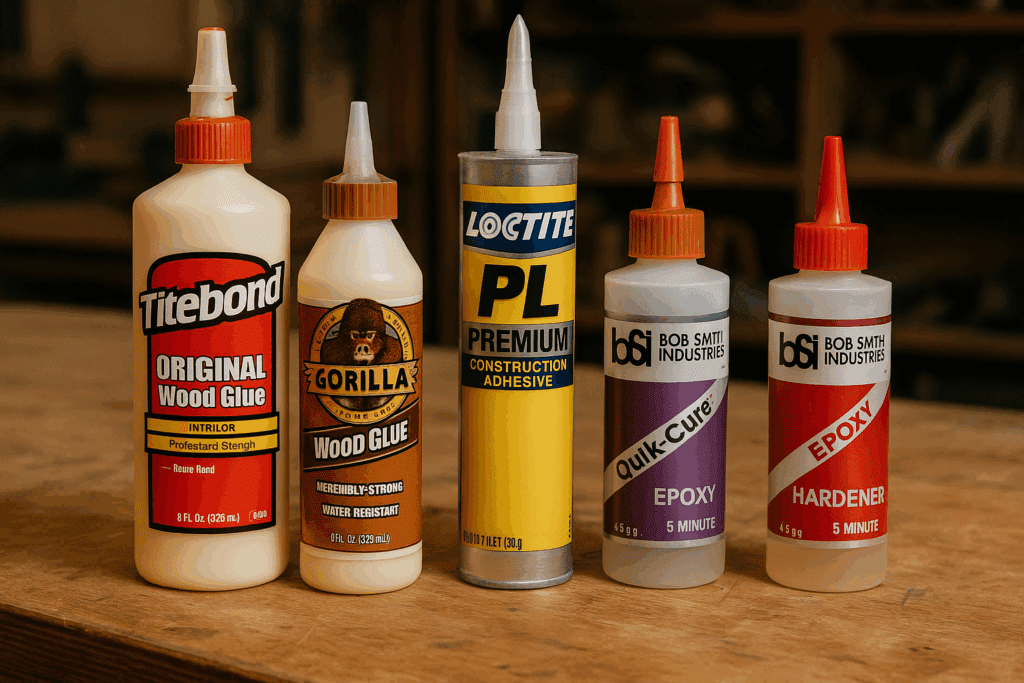
🔎 Types of Wood Glue (With Amazon Picks)
1. PVA Glue – The Classic All-Purpose Adhesive
Use For: Cabinets, shelving, furniture, DIY projects
Recommended: Titebond III Ultimate Wood Glue
PVA glue (Polyvinyl Acetate) is everywhere—and for good reason. It’s non-toxic, dries clear or yellow, and provides strong bonding under typical conditions. It’s perfect for tight-fitting joints, but not ideal for outdoor exposure unless rated waterproof.
Pros:
- Easy to use
- Budget-friendly
- Bonds are stronger than wood fibers
Cons:
- Can seal wood grain and resist stain
- Not all PVA glues are waterproof
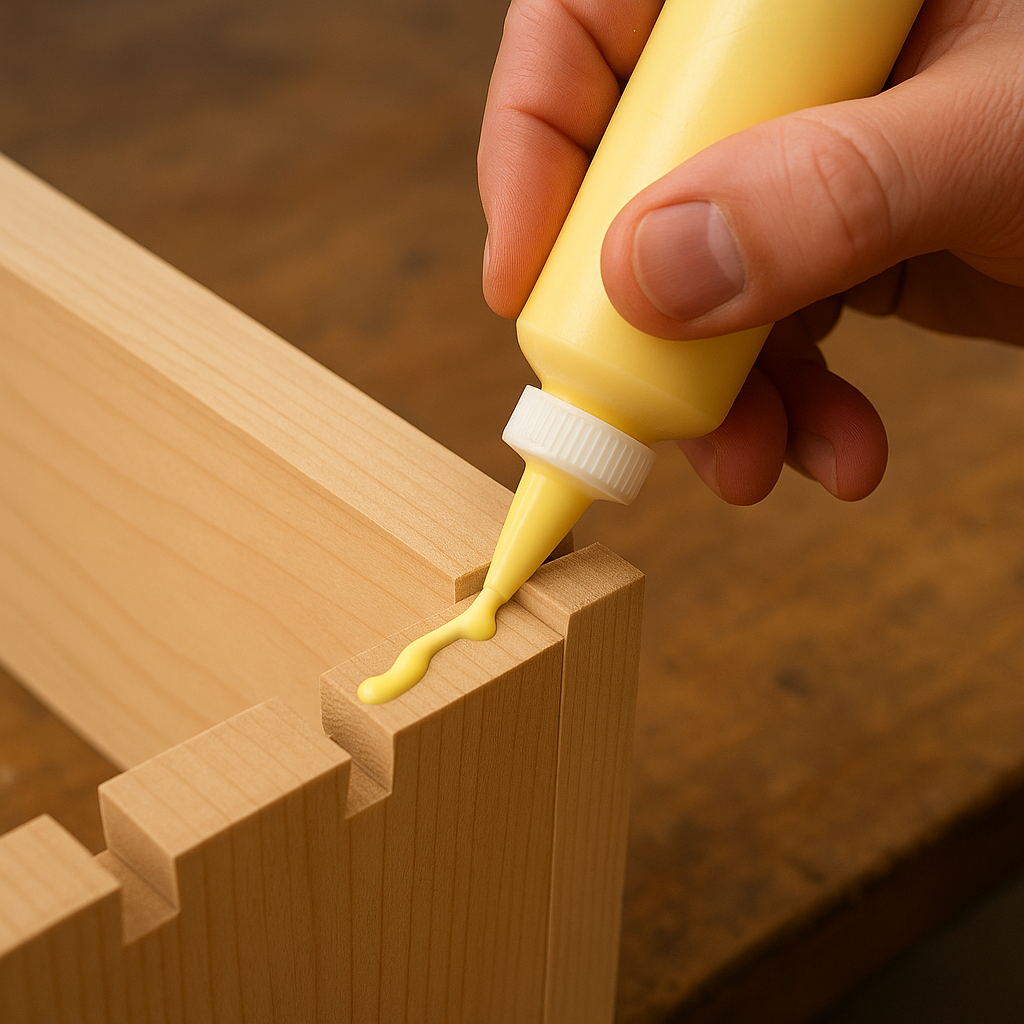
Tip: Pre-finish your pieces before glue-up to avoid staining issues caused by squeeze-out.
2. Polyurethane Glue – Rugged and Weatherproof
Use For: Outdoor furniture, bonding wood to non-wood materials
Recommended: Gorilla Glue Original
Unlike PVA, polyurethane glue activates with water and expands as it cures—great for filling gaps or irregular seams. It adheres well to stone, metal, plastic, and more, making it the go-to for mixed-material projects.
Pros:
- Excellent waterproofing
- Expands into voids
- Versatile material compatibility
Cons:
- Can be messy
- Requires moisture and clamping
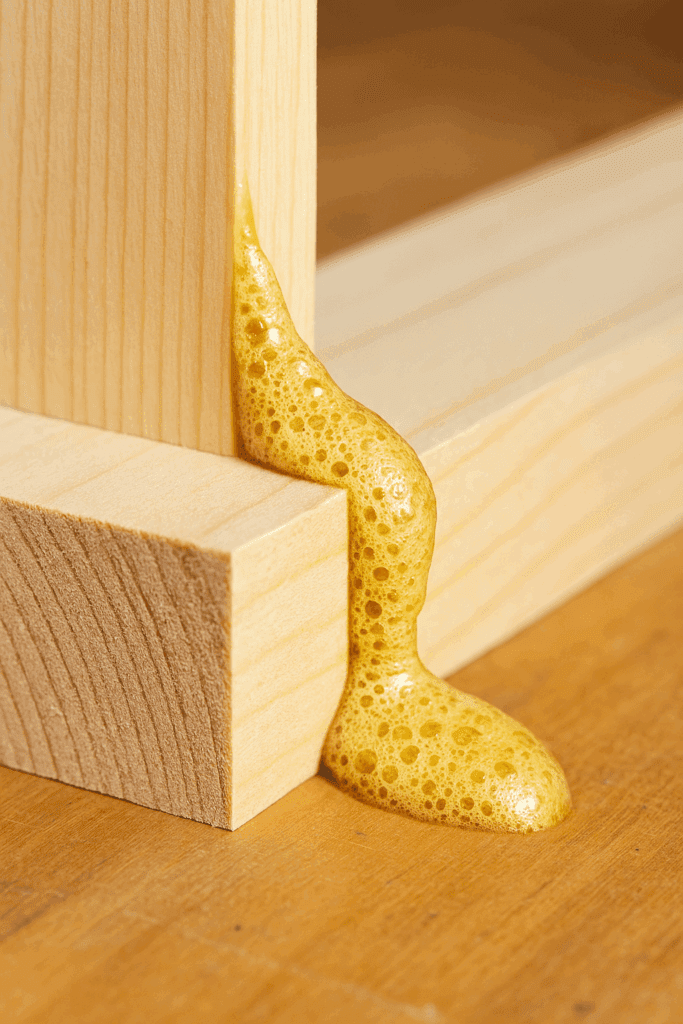
Warning: Expansion can force pieces apart—always clamp tightly and wipe squeeze-out early.
3. Construction Adhesive – Heavy-Duty, Gap-Filling
Use For: Home framing, plywood subfloors, drywall
Recommended: Loctite PL Premium Adhesive
This glue comes in a caulking tube and is meant for tough, uneven bonding jobs. It’s slow-curing, highly flexible, and ideal where clamping isn’t practical. Don’t use it for detail work—it’s designed for rough lumber.
Pros:
- Thick and gap-filling
- Bonds of dissimilar materials
Cons:
- Hard to sand or finish
- Not suitable for tight joinery
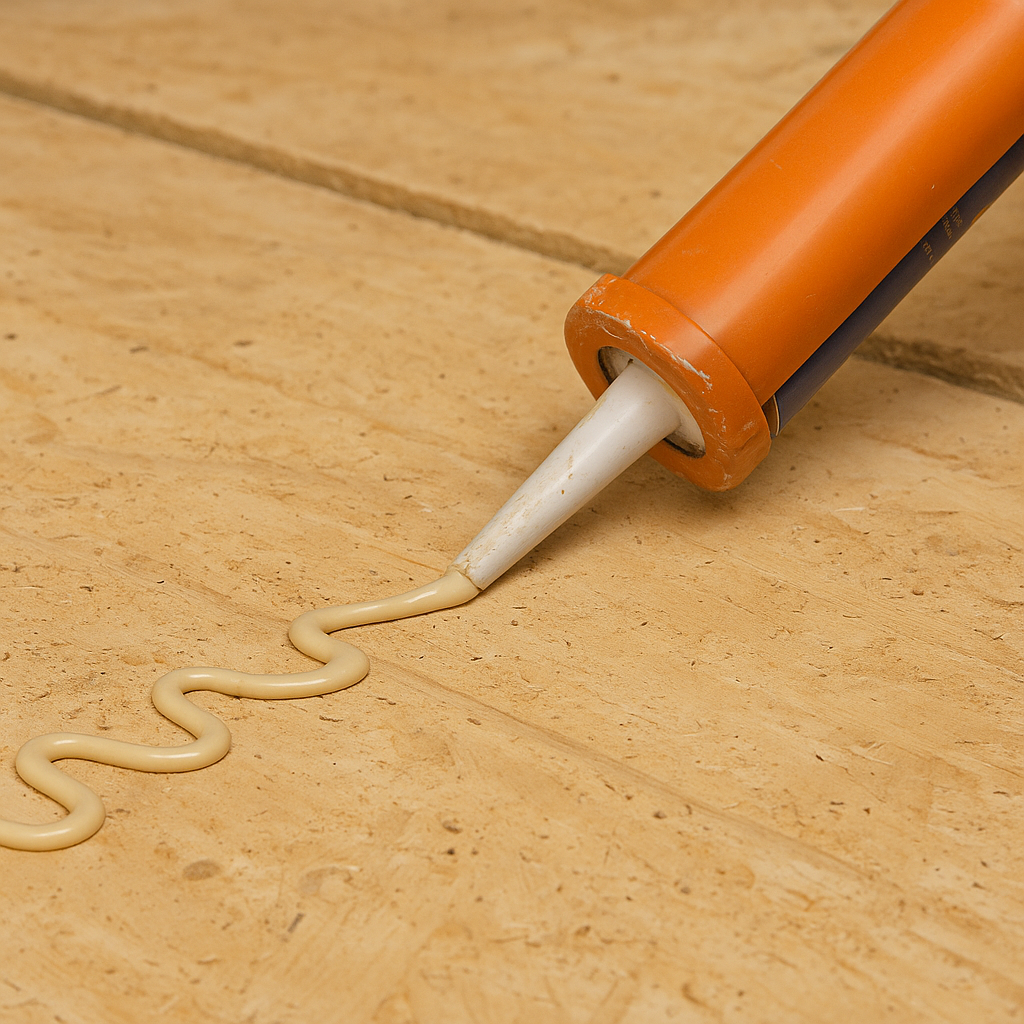
4. Epoxy Glue – Strongest Two-Part Bond
Use For: Live-edge slabs, repair work, river tables
Recommended: System Three General Purpose Epoxy
Epoxy consists of a resin and a hardener, creating an ultra-durable bond. It excels where traditional glues fail—especially when filling cracks, bonding odd shapes, or finishing wood with artistic flair.
Pros:
- Waterproof
- Great for artistic pours and void filling
- Superior strength and versatility
Cons:
- Short working time
- Can be toxic in fumes—wear protection
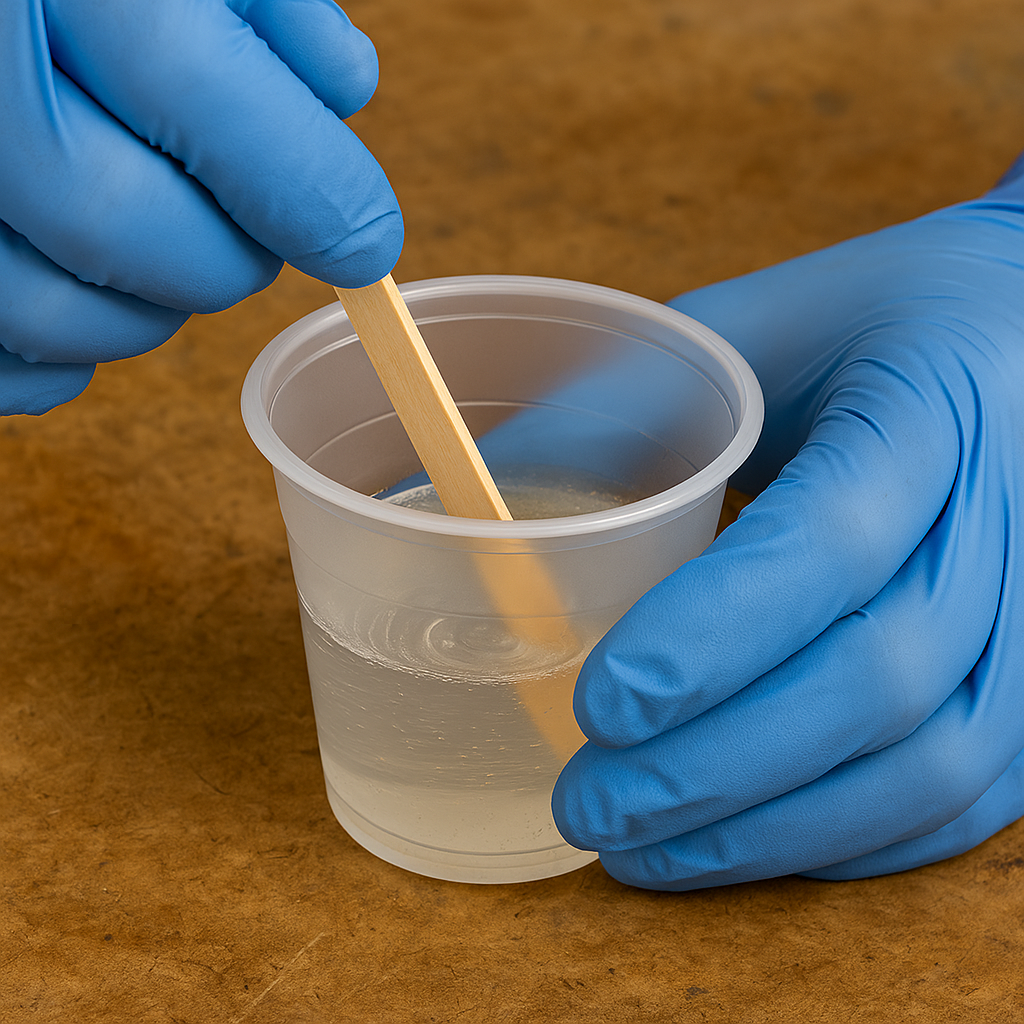
5. Cyanoacrylate Glue (CA) – Precision and Speed
Use For: Model building, woodturning, trim work
Recommended: Starbond EM-02 Super Fast Thin CA Glue
CA glue is thin, fast-drying, and strong in small doses. It’s great when you can’t clamp pieces or when time matters, though not for stress-bearing joints.
Pros:
- Sets instantly
- Clear finish
- Seals end grain and small cracks
Cons:
- Brittle over time
- Not for load-bearing joints

Bonus Use: CA glue is often used in pen turning and guitar work as a high-gloss finish layer.
6. Hot Melt Glue – Fast Fixes and Crafting
Use For: Edge banding, jigs, crafts, quick clamps
Recommended: Surebonder Wood Glue Sticks
Hot glue isn’t just for crafts—it’s useful in the shop, too. Wood-specific sticks offer better strength and flexibility. Still, it’s not made for heavy-duty tasks.
Pros:
- Heats and sets quickly
- Flexible bond
Cons:
- Melts under heat
- Weak shear strength
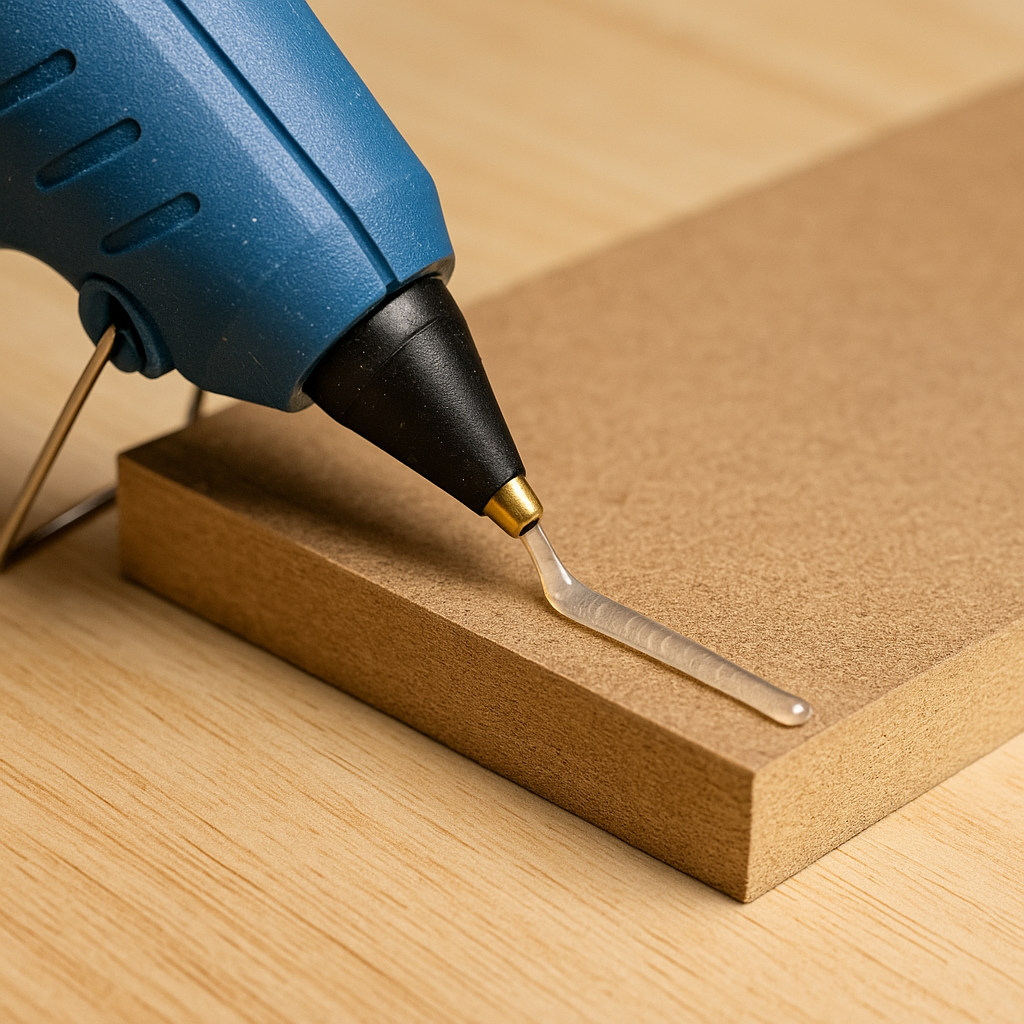
7. Hide Glue – The Restorer’s Best Friend
Use For: Furniture repair, instrument building
Recommended: Titebond Liquid Hide Glue
Made from animal collagen, hide glue is a traditional adhesive used in restoration. Its unique property? It re-bonds with itself, making it ideal for antiques where the old glue still exists.
Pros:
- Bonds with old glue
- Reversible with heat and moisture
Cons:
- Not water-resistant
- Short shelf life
Tip: Heat with a hair dryer to open joints without damaging delicate pieces.
🖌️ Wood Glue Application Tools That Matter
Use the right tool for your glue job:
- Brushes for even coating
- Syringes for detailed injection
- Rollers for wide laminations
- Bottles with angled tips for control
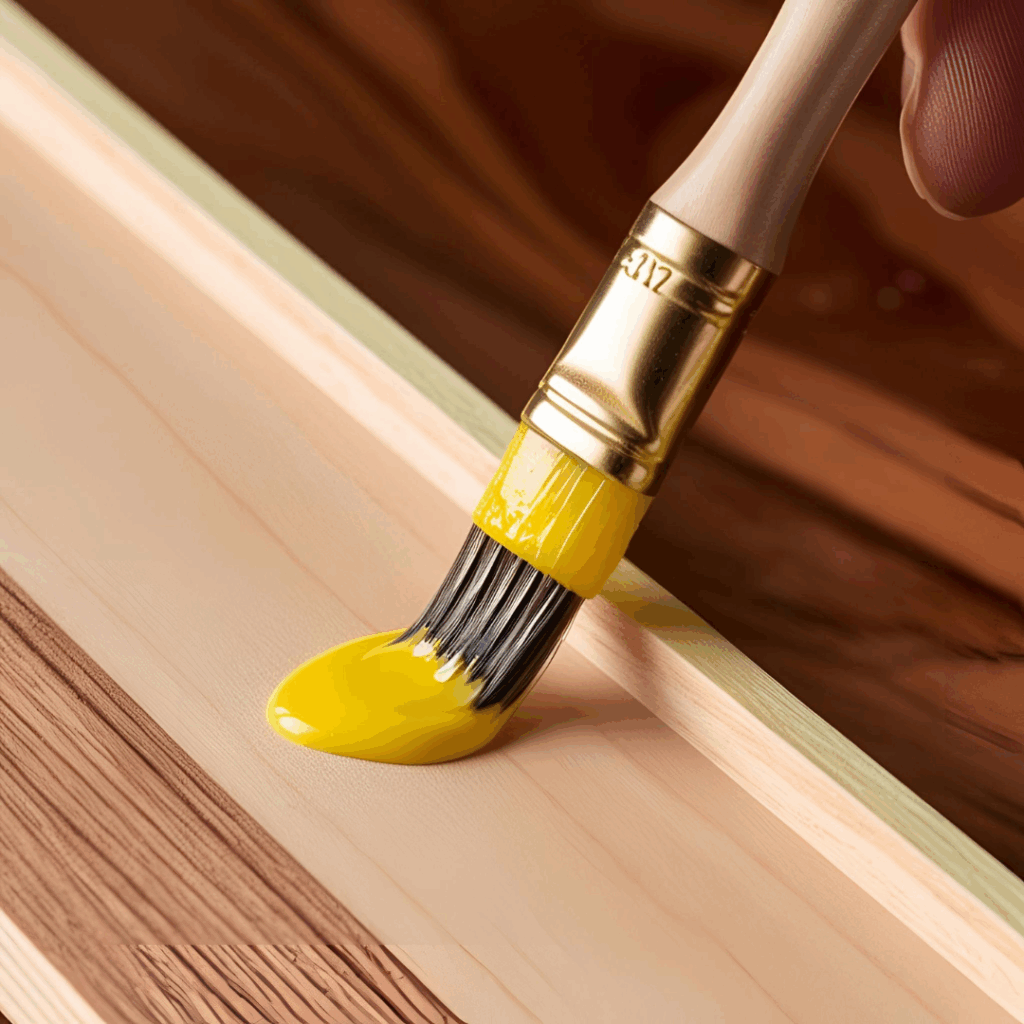
Advanced Tip: Squeeze bottles work, but investing in glue syringes or spreader rollers pays off in precision and cleanup time.
🧰 Recommended Glue Accessories
🎨 Glue and Finishing Tips
Many glue types interfere with staining or varnishing. Here’s how to prep like a pro:
- Wipe squeeze-out early
- Mask joints if pre-finishing
- Sand thoroughly
- Test finishes on scrap
🎨 Bonus: How to Make Plywood Look Like Oak
✅ Final Word: The Best Wood Glue Depends on the Job
| Project Type | Recommended Glue |
|---|---|
| Furniture | PVA (Titebond III) |
| Outdoor Projects | Polyurethane (Gorilla Glue) |
| Artistic Live-Edge Work | Epoxy (System Three) |
| Instrument Repair | Hide Glue |
| Trim / Small Repairs | CA Glue (Starbond) |
| Subfloors / Framing | Construction Adhesive |
Glue may seem simple, but the wrong glue, or the right glue used the wrong way, can ruin your work. Whether you’re crafting something decorative or building something structural, choose your adhesive as carefully as your lumber. Your project will thank you for it.




